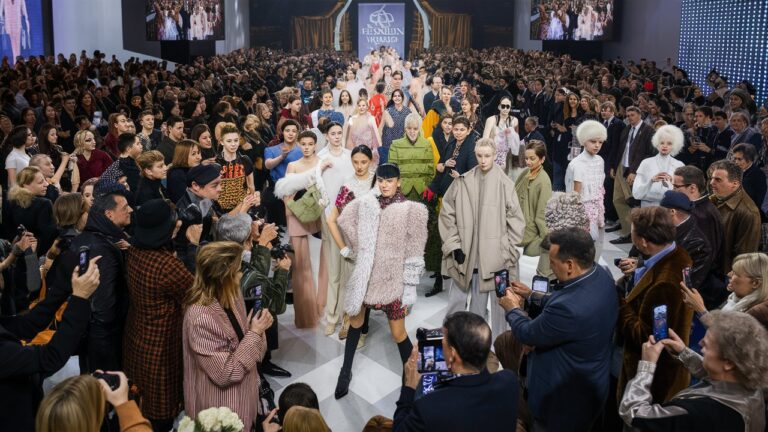Introduction
Fashion Week is more than a parade of luxurious fabrics and avant-garde designs—it’s a cultural phenomenon that shapes trends, challenges norms, and bridges the gap between artistry and commerce. Held biannually in iconic cities like New York, Paris, Milan, and London, these events are where designers, models, influencers, and industry insiders converge to redefine what’s next in fashion. But beyond the glittering runways lies a complex ecosystem of creativity, business strategy, and social commentary. This article dives deep into the multifaceted world of Fashion Week, exploring its history, global impact, behind-the-scenes mechanics, and evolving role in a digitally driven world.
1. The Evolution of Fashion Week: From Exclusive Soirées to Global Spectacles
Fashion Week’s origins trace back to 1943, when New York’s “Press Week” emerged as a response to World War II’s disruption of Parisian fashion dominance. What began as an exclusive gathering for elite buyers and journalists has since exploded into a global spectacle. Today, Fashion Week democratizes access to high fashion through livestreams, social media, and street style photography. Cities like Seoul and Lagos now host their own events, challenging Western hegemony and celebrating regional aesthetics. This evolution reflects fashion’s shift from rigid exclusivity to a more inclusive, boundary-pushing industry.
2. The Global Influence of Fashion Week: Spotlight on Major Cities
Each Fashion Week hub carries a distinct identity. New York prioritizes commercial viability, blending ready-to-wear pragmatism with bold innovation. Paris remains the heart of haute couture, where heritage brands like Chanel and Dior showcase meticulous craftsmanship. Milan celebrates Italian luxury, emphasizing tailoring and opulent textiles, while London thrives on rebellion, fostering emerging designers like Vivienne Westwood and Alexander McQueen. Meanwhile, emerging hubs like Mumbai and São Paulo spotlight cultural diversity, weaving traditional motifs into contemporary designs. Together, these cities form a dynamic network that drives global fashion trends.
3. Behind the Scenes: The Making of a Fashion Week Show
A runway show is a symphony of coordination. Months before the event, designers collaborate with patternmakers, stylists, and makeup artists to refine their vision. Models undergo rigorous casting calls, while production teams secure venues and choreograph lighting. The final 10-minute show is the culmination of sleepless nights, last-minute alterations, and relentless attention to detail. Behind the glamour lies immense pressure: a single misstep can overshadow a collection, while a viral moment can catapult a designer to stardom.
4. The Digital Transformation: How Technology is Reshaping Fashion Week
The rise of digital platforms has revolutionized Fashion Week. Livestreams allow millions to watch shows in real time, while virtual reality (VR) experiences offer front-row access to remote audiences. Social media platforms like Instagram and TikTok amplify trends instantly—look no further than #FashionWeek, which garners billions of views. Designers now experiment with digital-only collections, NFTs, and AI-generated designs. Hybrid events blend physical and virtual elements, democratizing participation while challenging traditional exclusivity.

5. Sustainability in Fashion Week: A Push Toward Ethical Practices
As climate concerns grow, Fashion Week faces scrutiny for its environmental footprint. Cities like Copenhagen lead the charge with dedicated Sustainable Fashion Weeks, banning synthetic fabrics and prioritizing carbon-neutral events. Designers like Stella McCartney and Gabriela Hearst champion eco-friendly materials, from mushroom leather to recycled polyester. Critics argue, however, that true sustainability requires systemic change—reducing overproduction, embracing circular fashion, and rethinking the biannual cycle’s toll on resources.
6. The Cultural Impact: Fashion Week as a Reflection of Society
Fashion Week is a mirror of societal shifts. The 2020 Black Lives Matter protests prompted a reckoning, with brands pledging to amplify Black designers and models. Gender-neutral collections challenge binary norms, while adaptive clothing lines cater to disabled communities. Political statements abound: Pussyhats at 2017 shows symbolized feminist resistance, while Ukrainian designers at 2022 events highlighted wartime resilience. These moments underscore fashion’s power to provoke dialogue and drive social change.
7. Inclusivity and Diversity: Redefining Beauty Standards on the Runway
The push for inclusivity has transformed runway casting. Plus-size models like Paloma Elsesser, older icons like Maye Musk, and nonbinary talents like Alok Vaid-Menon now grace major shows. Brands like Fenty and Savage x Fenty prioritize racial diversity, while hijab-wearing models like Halima Aden break barriers in modest fashion. Despite progress, critics note lingering tokenism—calls persist for systemic equity in hiring, pay, and creative leadership.
Conclusion: Fashion Week’s Enduring Legacy and Future Trajectory
Fashion Week is no longer just about clothing—it’s a platform for storytelling, activism, and technological experimentation. As it adapts to sustainability mandates, digital innovation, and cultural shifts, its role as a trendsetter remains unchallenged. Yet, the industry must confront its contradictions: balancing creativity with ethics, exclusivity with accessibility, and spectacle with substance. One thing is certain: Fashion Week will continue to captivate, challenge, and inspire, reflecting the ever-changing tapestry of human expression.
Frequently Asked Questions (FAQs)
Q1: What is the purpose of Fashion Week?
Fashion Week serves as a biannual showcase for designers to debut seasonal collections to buyers, media, and influencers. It sets trends, drives sales, and fosters industry connections.
Q2: Which cities host the most influential Fashion Weeks?
The “Big Four” are New York, Paris, Milan, and London. Emerging hubs like Copenhagen, Lagos, and Tokyo are gaining prominence for their unique perspectives.
Q3: How can someone attend Fashion Week?
Access is typically invitation-only for industry professionals. However, some events offer public tickets, and digital platforms provide virtual access to shows.
Q4: How has sustainability impacted Fashion Week?
Many events now enforce eco-friendly practices, from zero-waste sets to carbon offset programs. Designers increasingly use recycled materials and advocate for slow fashion.
Q5: What role does technology play in modern Fashion Week?
Livestreams, VR, and social media have democratized access. Digital showrooms and AI-driven designs are reshaping how collections are presented and consumed.
This comprehensive exploration reveals Fashion Week as a dynamic intersection of art, commerce, and culture—a spectacle that will continue to evolve with the times.
